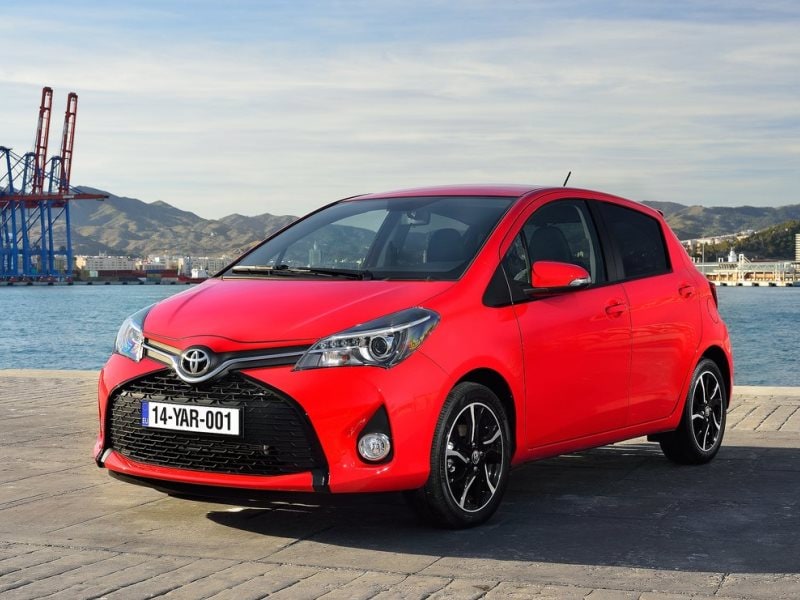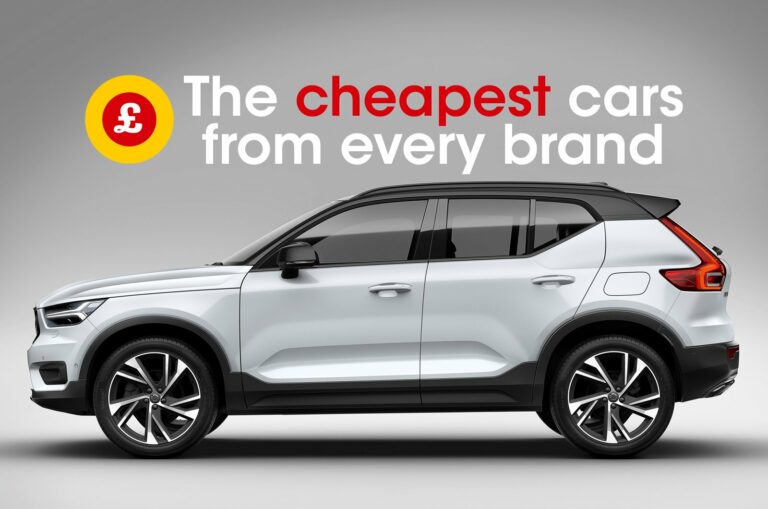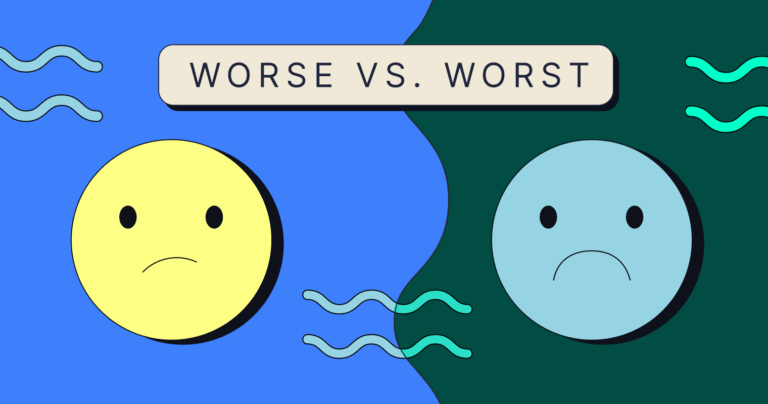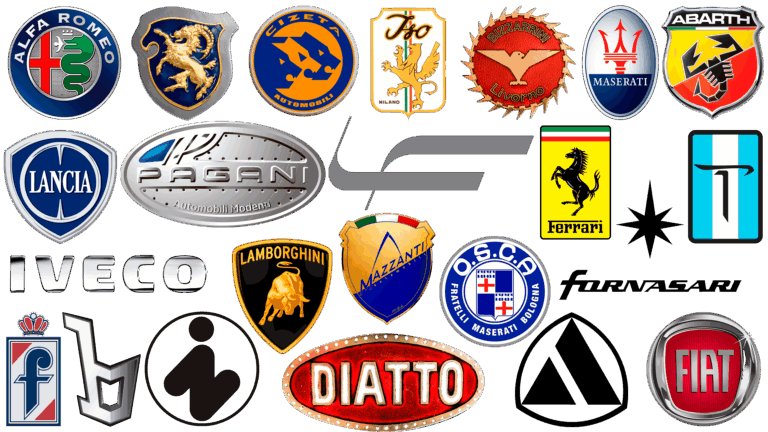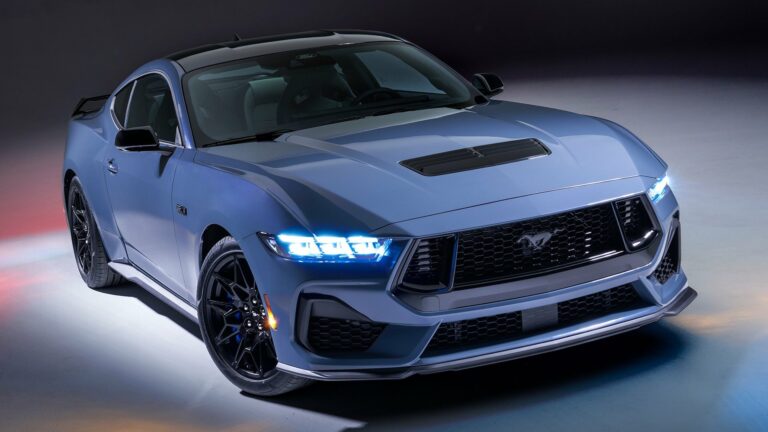What Is The Cheapest Brand New Car To Buy? A Comprehensive Guide
What Is The Cheapest Brand New Car To Buy? A Comprehensive Guide cars.truckstrend.com
The quest for the cheapest brand new car is a perennial one, driven by budget consciousness, the desire for reliability, and the appeal of that "new car smell" without the hefty price tag. For many, a brand new vehicle offers peace of mind, a full warranty, and the latest safety features, making it a compelling alternative to a used car. However, in an automotive landscape increasingly dominated by SUVs and rising prices, identifying the true cheapest brand new car requires more than just glancing at the lowest sticker price. It demands a holistic understanding of value, ownership costs, and market realities.
This comprehensive guide will navigate the complexities of finding the most affordable new car, delving beyond the initial purchase price to uncover the true cost of ownership, explore current market dynamics, highlight the leading contenders, and equip you with practical advice to make an informed decision.
What Is The Cheapest Brand New Car To Buy? A Comprehensive Guide
Beyond the Sticker Price: Understanding True Cost of Ownership
When considering "the cheapest brand new car," it’s crucial to look beyond the Manufacturer’s Suggested Retail Price (MSRP). The initial price tag is just one component of the total cost of ownership (TCO), which encompasses all expenses incurred over the vehicle’s lifespan. A car with a slightly higher MSRP might prove cheaper in the long run due to superior fuel economy, lower insurance premiums, or reduced maintenance needs.
Key factors contributing to the true cost of ownership include:
- Fuel Efficiency: A vehicle’s miles per gallon (MPG) directly impacts your daily and monthly expenses. Even a small difference can add up significantly over years of driving.
- Insurance Costs: Insurers assess risk based on the vehicle’s make, model, safety ratings, repair costs, and theft rates. Budget-friendly cars often have lower insurance premiums due to their simpler construction and less expensive parts.
- Maintenance and Repairs: While new cars come with warranties, scheduled maintenance (oil changes, tire rotations, fluid checks) is still necessary. Research a model’s typical maintenance schedule and the cost of common wear-and-tear parts.
- Depreciation: This is often the largest, yet overlooked, cost of owning a new car. It’s the difference between what you pay for a car and what it’s worth when you sell or trade it in. Some budget cars hold their value surprisingly well, while others depreciate rapidly.
- Financing Costs: Unless you pay cash, the interest rate on your car loan will add to the total price. A lower interest rate, even on a slightly more expensive car, can sometimes result in lower monthly payments than a "cheaper" car financed at a higher rate.
- Registration, Taxes, and Fees: Don’t forget sales tax, registration fees, and other local levies that vary by state and can add hundreds or even thousands to the final price.
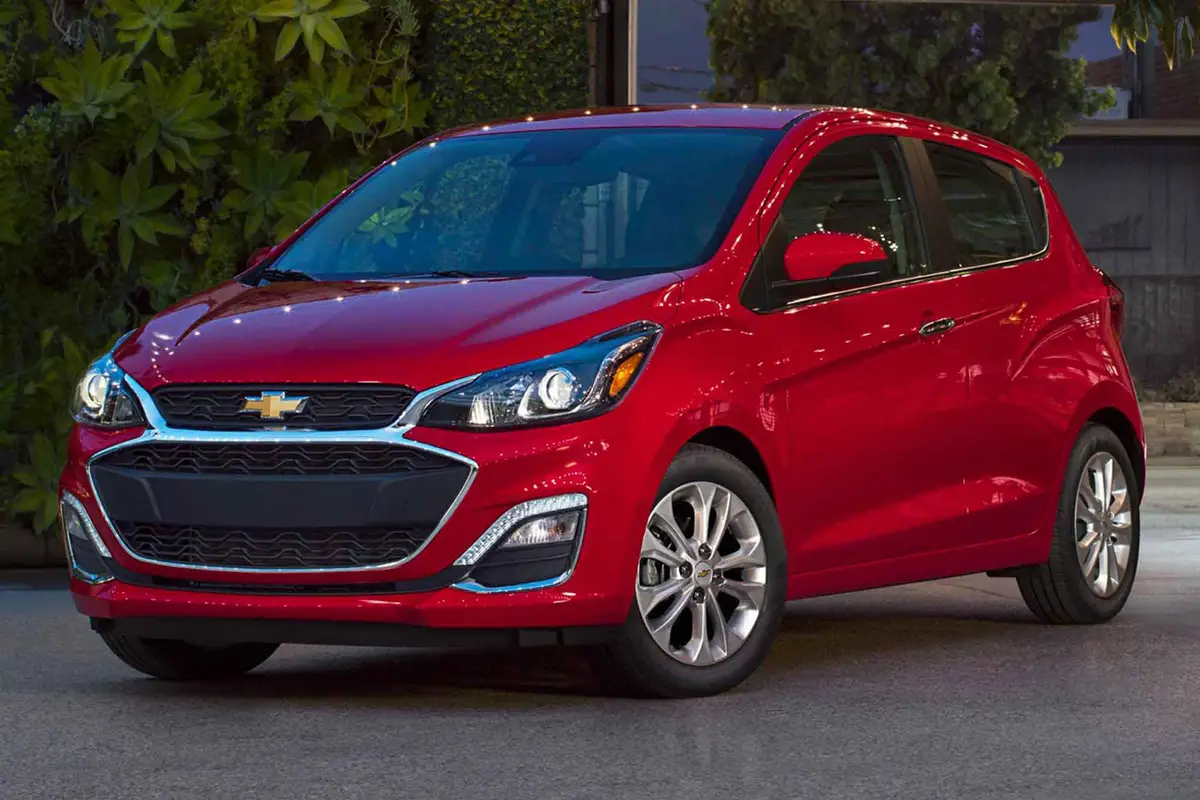
By factoring in these elements, you can gain a more accurate picture of what a truly "cheap" car will cost you over its ownership period.
Current Market Landscape for Affordable New Cars
The automotive market has undergone significant shifts in recent years, making the search for genuinely cheap brand new cars more challenging. Supply chain disruptions, particularly semiconductor shortages, have limited vehicle production, leading to lower inventory levels. This scarcity, coupled with inflationary pressures, has driven up prices across the board.
Historically, the sub-$20,000 segment offered numerous options like the Honda Fit, Toyota Yaris, and Ford Fiesta. Today, many of these models have been discontinued, replaced by higher-priced crossovers or simply priced out of the entry-level market. Dealers, facing limited inventory, often have less incentive to offer significant discounts and, in some cases, have even implemented "market adjustments" (dealer markups) that push prices even higher.
Despite these challenges, a handful of manufacturers continue to offer vehicles designed to be highly accessible. These models often prioritize practicality, fuel efficiency, and essential features over luxury or high performance, making them the default contenders for the title of "cheapest brand new car."
Contenders for the Cheapest Brand New Car (U.S. Market Focus)
As of late 2023 and early 2024, the list of truly affordable brand new cars is shrinking, but a few models consistently emerge as the front-runners. It’s important to remember that prices are starting MSRPs and can vary significantly based on trim level, optional features, dealer location, and current incentives.
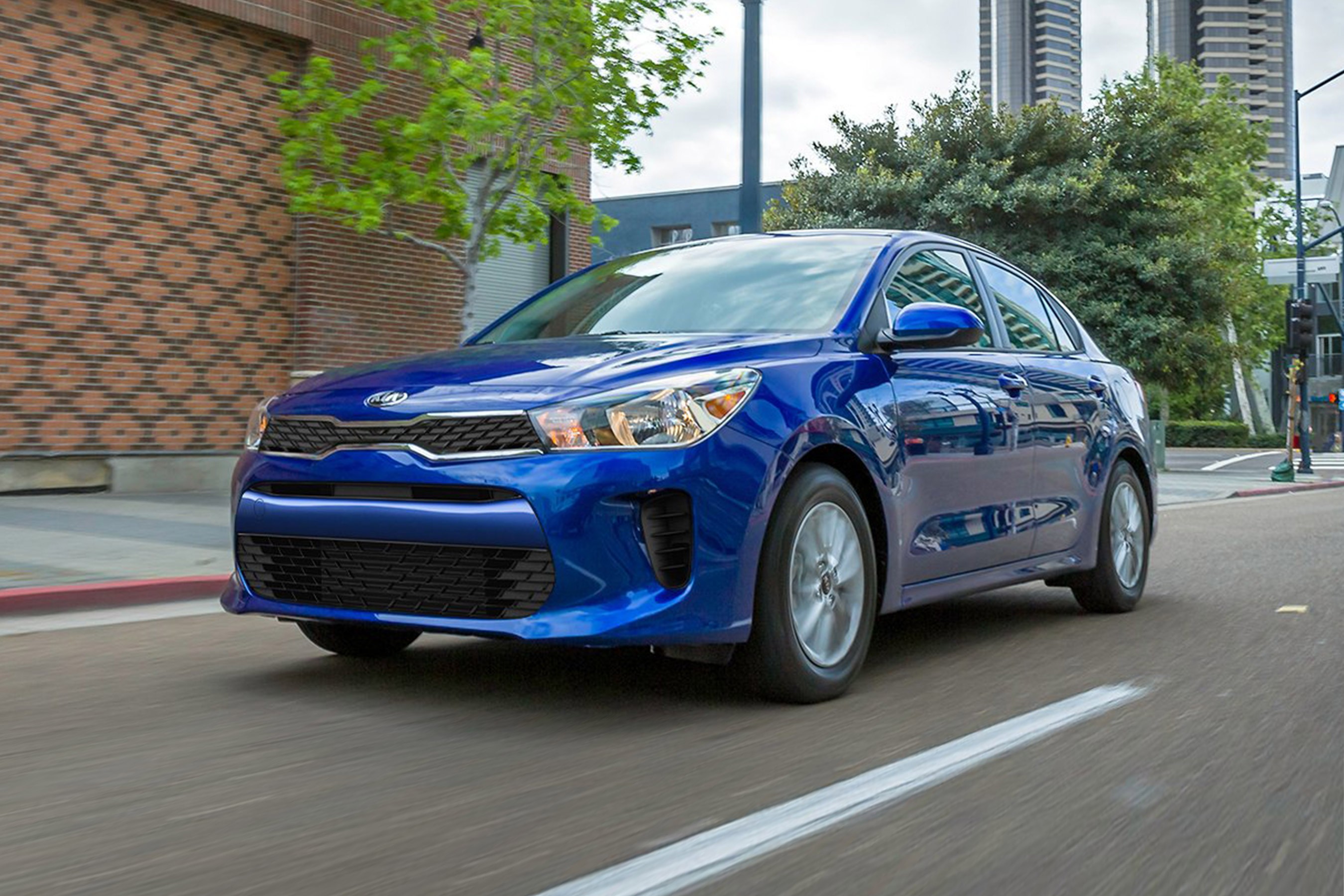
Here are the primary contenders:
- Mitsubishi Mirage (Hatchback & G4 Sedan): Consistently holds the title of the absolute cheapest new car. It prioritizes fuel economy and a long warranty over power or refinement. Its small size makes it excellent for city driving and parking.
- Nissan Versa: A subcompact sedan that offers more interior space and a slightly more refined driving experience than the Mirage. It boasts excellent fuel economy and some surprising standard safety features for its price point.
- Kia Forte: A compact sedan that often comes with a very competitive starting price, especially for its segment. It offers a good balance of features, space, and a strong warranty, often feeling like a step up from true entry-level cars.
- Hyundai Elantra: Similar to the Forte (they share platforms), the Elantra provides a stylish design, comfortable interior, and a host of standard features for its price. Hyundai’s excellent warranty is also a major draw.
- Chevrolet Trax: While a relatively new entry to the "cheapest" list, the redesigned Trax offers a small SUV form factor at a very attractive starting price, often undercutting many compact sedans. Its higher seating position and more rugged styling appeal to many buyers.
These vehicles represent the core of the budget new car market, providing a reliable and warrantied option for those who need basic transportation without breaking the bank.
How to Find the Best Deal on a "Cheapest" Car
Even when looking at the lowest-priced vehicles, there are strategies to ensure you get the best possible deal:
- Do Your Research Thoroughly: Understand the MSRP of the specific trim level you’re interested in. Use manufacturer websites and third-party car shopping sites (e.g., Edmunds, Kelley Blue Book, TrueCar) to compare prices and see what others are paying in your area.
- Shop Multiple Dealerships: Don’t limit yourself to the closest dealer. Contact several dealerships, even those a bit further away, via email or phone to get competitive quotes. Pit them against each other (politely).
- Focus on Base Models: The "cheapest" price often refers to the absolute base trim with no added options. Resist the urge to add costly packages or features you don’t truly need, as these can quickly inflate the price.
- Get Pre-Approved for a Loan: Secure financing from your bank or credit union before visiting the dealership. This gives you leverage and a benchmark interest rate to compare against the dealer’s financing offers.
- Negotiate the "Out-the-Door" Price: Don’t just negotiate the MSRP. Insist on negotiating the "out-the-door" price, which includes all taxes, fees, and dealer add-ons. Be wary of hidden fees like "documentation fees" that can vary widely.
- Inquire About Incentives and Rebates: Manufacturers often offer special financing rates, cash rebates, or lease deals. Ask your dealer about any available programs you might qualify for.
- Consider Timing Your Purchase: The end of the month, quarter, or year can be good times to buy, as dealerships may be trying to meet sales quotas. New model year introductions also mean dealers might be eager to clear out older inventory.
- Be Prepared to Walk Away: If a dealer isn’t meeting your price or is pressuring you into unwanted add-ons, be ready to leave. There are other cars and other dealerships.
Important Considerations When Buying a Budget Car
While affordability is key, it shouldn’t be the only factor. Keep these considerations in mind:
- Safety Features: Even the cheapest cars today come with essential safety features like multiple airbags, anti-lock brakes (ABS), and electronic stability control (ESC). Many now also offer advanced driver-assistance systems (ADAS) like automatic emergency braking (AEB) as standard or affordable options, which are highly recommended.
- Reliability and Warranty: Budget cars can be surprisingly reliable, especially those from reputable brands known for their quality control (e.g., Kia, Hyundai, Nissan). A long warranty, like Kia’s and Hyundai’s 10-year/100,000-mile powertrain warranty, provides excellent peace of mind.
- Basic vs. Desired Features: Manage your expectations. The cheapest models will be basic. Expect manual seats, basic infotainment systems (maybe just Bluetooth), and potentially steel wheels with hubcaps. Decide what features are absolute necessities for your daily driving.
- Long-term Use and Resale Value: Consider how long you plan to keep the car. If it’s a short-term solution, depreciation will be a bigger factor. If you plan to keep it for many years, reliability and low maintenance costs become paramount. While budget cars aren’t known for stellar resale, their low initial cost means you have less to lose.
- Test Drive: Never skip the test drive, even for a "cheap" car. Assess comfort, visibility, acceleration (especially for merging onto highways), braking, and overall driving dynamics. A car might be cheap, but if it’s uncomfortable or difficult to drive, it’s not a good value.
Potential Challenges and Solutions
- Limited Availability of Base Models: Dealers often prefer to stock higher trim levels because they yield larger profits. You might need to order a base model or expand your search radius.
- Solution: Be specific with dealers about the trim you want. Use online inventory search tools. Be patient.
- Dealer Markups/Add-ons: Some dealers might add "market adjustments," mandatory accessory packages (e.g., nitrogen in tires, paint protection), or extended warranties.
- Solution: Refuse these add-ons. If they are non-negotiable, walk away. Always ask for an itemized breakdown of all costs.
- Pressure to Upgrade: Salespeople are trained to upsell. They might highlight the "value" of a slightly more expensive trim or package.
- Solution: Stick to your budget and your list of non-negotiable features. Remind yourself why you’re looking for the cheapest car.
- Financing Challenges: If you have limited or poor credit, securing a low-interest loan on a new car can be difficult, even for cheap models.
- Solution: Work on improving your credit score. Consider a co-signer. Explore credit union loans, which often offer better rates.
Table Price: The Cheapest Brand New Cars (U.S. Market, Estimated Starting MSRP)
Please note: Prices are highly subject to change due to market conditions, manufacturer incentives, and regional variations. These are starting MSRPs and do not include destination fees, taxes, or dealer markups.
| Make | Model | Type | Starting MSRP (Approx.) | Key Feature/Notes |
|---|---|---|---|---|
| Mitsubishi | Mirage ES | Hatchback | $16,695 | Lowest MSRP, excellent fuel economy (39 MPG combined), 5-yr/60k mile basic warranty, 10-yr/100k mile powertrain warranty. Basic interior. |
| Mitsubishi | Mirage G4 ES | Sedan | $17,695 | Sedan version of the Mirage, same mechanicals and warranty. Slightly more cargo volume in trunk than hatch. |
| Nissan | Versa S | Sedan | $17,090 | More spacious interior than Mirage, good standard safety features (AEB), excellent fuel economy (35 MPG combined). CVT transmission. |
| Kia | Forte LX | Sedan | $19,990 | Entry-level compact sedan, larger than subcompacts, competitive features for its price, 10-year/100,000-mile powertrain warranty. |
| Hyundai | Elantra SE | Sedan | $21,600 | Stylish design, comfortable ride, good standard tech, 10-year/100,000-mile powertrain warranty. Slightly higher starting price. |
| Chevrolet | Trax LS | Small SUV | $21,495 | Newest entry, appealing SUV styling, surprisingly spacious, good tech for the price, higher seating position. |
Disclaimer: Prices are approximate and subject to change. Always check with local dealerships for the most current pricing and availability.
Frequently Asked Questions (FAQ)
Q: Is buying the cheapest new car always the best option?
A: Not necessarily. While appealing to the budget, the cheapest car might lack features you truly need, or its long-term cost of ownership (due to poor fuel economy or high insurance) might offset the initial savings. It’s about finding the best value for your specific needs and budget.
Q: Are cheap new cars reliable?
A: Generally, yes. Modern manufacturing standards mean even entry-level cars are built to be reliable. Simpler mechanicals can sometimes even mean fewer things to break. Brands like Kia, Hyundai, and Nissan often offer competitive warranties that back up their reliability claims.
Q: What’s the difference between MSRP and out-the-door price?
A: MSRP (Manufacturer’s Suggested Retail Price) is the suggested price from the factory. The "out-the-door" price is the total amount you will pay, including MSRP, destination fees, dealer fees, sales tax, registration, and any optional add-ons or markups. Always negotiate the out-the-door price.
Q: Should I buy a used car instead of the cheapest new car?
A: This depends on your priorities. A used car (especially 3-5 years old) typically offers more features or a larger vehicle for the same price as a new budget car. However, a new car comes with a full factory warranty, the latest safety tech, and no unknown history. For peace of mind and long-term reliability, a new car can be a solid choice.
Q: How can I lower my insurance on a cheap car?
A: Choose a model known for low insurance rates (often smaller, less powerful, and frequently stolen vehicles). Opt for higher deductibles, maintain a good driving record, bundle policies, and inquire about discounts (e.g., good student, low mileage, safety features).
Q: What essential features should even the cheapest car have?
A: At a minimum, look for power windows, air conditioning, Bluetooth connectivity, and a full suite of airbags, ABS, and ESC. Many cheap new cars now also include basic ADAS features like automatic emergency braking, which is a valuable safety addition.
Conclusion
The quest for the cheapest brand new car is a pursuit of practicality and value in a market that constantly evolves. While the absolute lowest sticker price might lead you to models like the Mitsubishi Mirage or Nissan Versa, the "cheapest" car is ultimately the one that best fits your budget for both initial purchase and long-term ownership, while still meeting your essential needs.
By understanding the true cost of ownership, navigating the current market landscape with smart shopping strategies, and carefully considering your priorities, you can successfully find a reliable, warrantied, and genuinely affordable brand new vehicle. It requires diligence and research, but the peace of mind that comes with owning a new car without financial strain is a reward well worth the effort.

